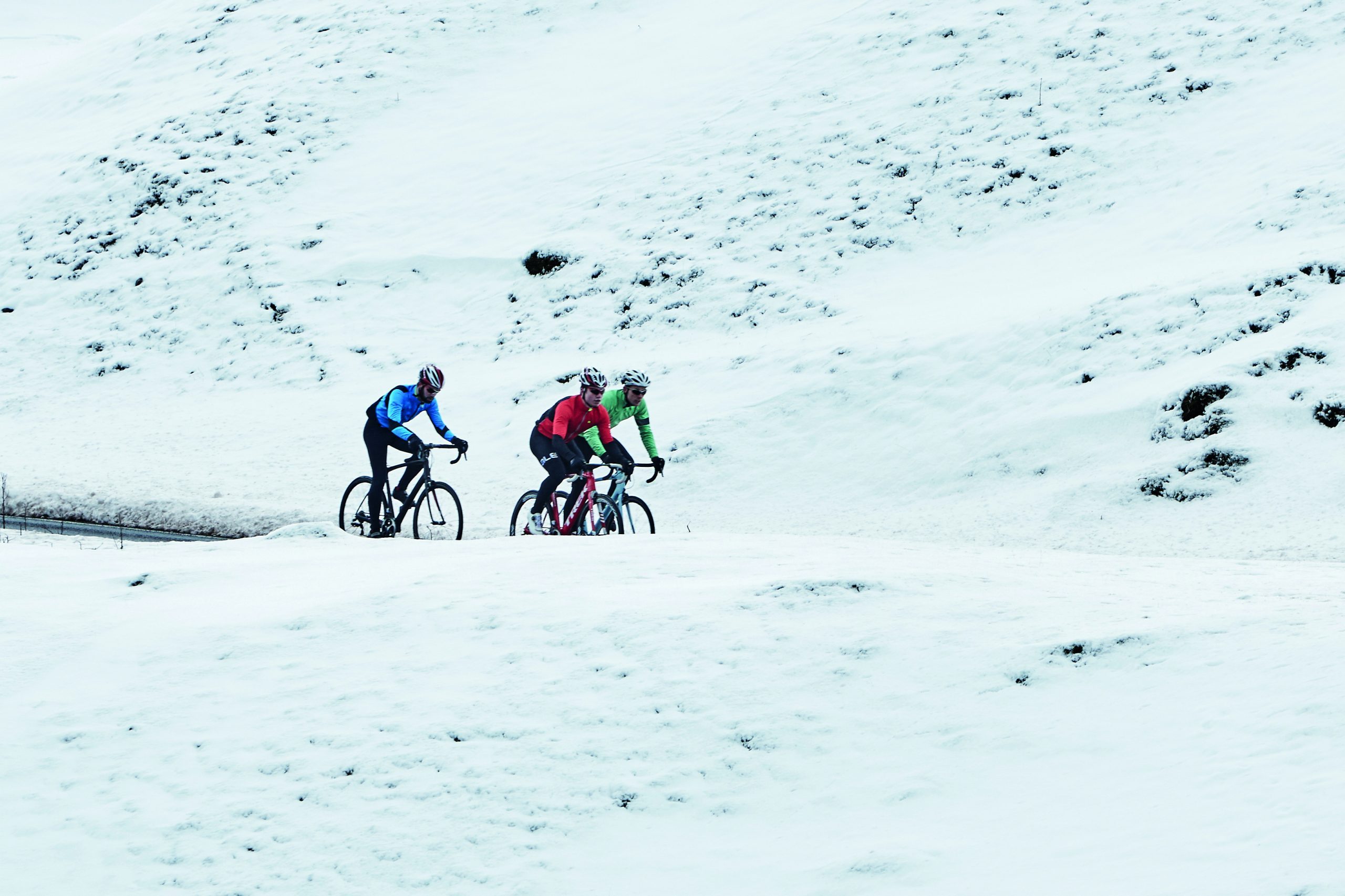 Spring is just around the corner, and many people are toying with the idea of taking their bicycle out of the basement and going for a ride. Before doing this, however, it’s a good idea to perform some basic maintenance on your ride to make sure it’s ready to perform.
Spring is just around the corner, and many people are toying with the idea of taking their bicycle out of the basement and going for a ride. Before doing this, however, it’s a good idea to perform some basic maintenance on your ride to make sure it’s ready to perform.
Tires
Tires don’t have to be ridden on to go flat. Generally, a bicycle will lose at least 10 psi of tire pressure while sitting over the winter. So, the first thing you should do is check your bike’s tire pressure. If it’s low, pump it up to the recommended pressure, which is usually written on the tire’s sidewall. Once the tires are fully pressurized, inspect them for any punctures or cracks (especially in the sidewall). If the rubber has deteriorated, it should be easy to notice.
Spokes
Bicycle spokes require a certain amount of tension to support the wheel’s rim. Loose spokes can be hard to detect visually, so you’ll have to give each spoke a quick wiggle to check its tension. Correctly tensioned spokes will not move very easily, but loose spokes might move as much as a quarter of an inch under slight pressure. If you find any loose spokes, they will need to be tightened at a bicycle shop (if you happen to have a bicycle spoke wrench, you can tighten them yourself, although you run the risk of deforming the wheel). Chances are that if your bike has been maintained, you shouldn’t find any loose spokes when you pull it out of storage.
Drivetrain
Your bike’s chain, sprockets, and derailleurs need to be properly lubricated to function smoothly. They also have to be clean. Before taking your bike out for that first ride, it’s a good idea to clean the drivetrain of all the old oil. To do this, spray the chain and other noticeably dirty parts with bicycle degreaser (available for a few bucks at a bike shop). Let it set for five minutes, then wipe the drivetrain clean with a rag. An old toothbrush can be used to scrub problem areas if necessary (this works well for the small gears on the rear derailleur arm).
After wiping as much grit off as possible, rinse the entire drivetrain with low-pressure water from a hose. Wipe it off again and let it air dry outside for at least an hour. Check to see if the chain is completely dry; if it’s not, let it sit outside longer.
Once the drivetrain is dry, it needs to be re-lubricated. Most bike shops will carry a variety of drivetrain lube, and they should be able to tell you what is the best kind for your riding style. I recommend Tri-Flow. It is a very good dry lubricant (won’t collect as much dirt from the trail), and it can be used to lubricate all pivot points on your bike’s drivetrain, including the chain. One or two drops on clean pivot points does the trick. To oil the chain, lean your bike up against something so that you can spin the pedals backward freely. While spinning the pedals, squirt a steady stream of the lubricant onto the chain. Once the entire chain is glistening, you can stop. Let it set for a few minutes and then wipe the excess off with a rag. Don’t be afraid of taking too much lubricant off; the essential gaps in the chain will have absorbed enough and you won’t be able to wipe that away from the surface.
Brakes
Checking both brakes to make sure they don’t rub against the rims and that they can lock up both wheels is always a good idea. If the brake pads seem out of alignment or worn down, it would be a good idea to have a bike shop look at them. Most bicycle manuals include instructions on how to adjust the brakes, so you can definitely do the work yourself if you want to. However, if your breaks were working perfectly before winter, they probably won’t be that bad off now.
Shifters
The steel cables used to control the shifters tend to stretch because they are always under tension. This means that your bike’s shifting might not be as crisp as it used to be. Going for a short ride down your driveway is a good way to get a sense of the shifting. If it seems sloppy, the derailleurs will need a tune-up. This procedure can be tricky, especially if you don’t have a bike stand that lets you spin the pedals forward with the bike off the ground. A shop with the right equipment will be able to do this for you though, or you can consult your bike’s manual if you want to try it yourself.
Suspension
If your bike is equipped with suspension, the moving parts will need to be lubricated. The problem is that different sorts of suspension require different kinds of lubrication. Most of the time suspension forks can be lubricated by applying a fully-synthetic lube to the stanchion tubes. But, if you’re unsure of the best way to proceed it doesn’t cost anything to ask someone at a shop.
Note: High-end mountain bikes often use air shocks instead of coil shocks. Just like with tires, this sort of suspension needs to be pressurized to the correct level before riding.
General Safety Check
Now that your bike is properly cleaned, tuned, and lubricated, test out things such as the handlebars and pedals to make sure everything is secure. For example, if the stem’s handlebar clamp isn’t tightened properly, the handlebars might drop on you in the middle of your ride (this has happened to me, lovely day that was). A good way to check that your steering is secure is to stand in front of your bike with your front wheel clamped between your knees. If you can twist the handlebars while the wheel is locked, your steering bolts on the stem need to be tightened.
Here’s a list of things to check:
Stem-handlebar connection is secure
Stem-steering connection is secure
Pedals are fully threaded into crank arms
Pedals spin freely
Crank doesn’t wobble when spinning
Wheels don’t have eccentricity or wobble
Seat/Seat Post are secure
Spokes are tight
Reflectors are in place
Tires hold air
Braking action is smooth and powerful
That’s all I can think of for now, but there’s probably plenty more that a bike shop could think of. Hopefully this year’s riding season will be fun and safe for everyone! Please add any tuning tips to the comments if you come up with something I’ve forgotten.
